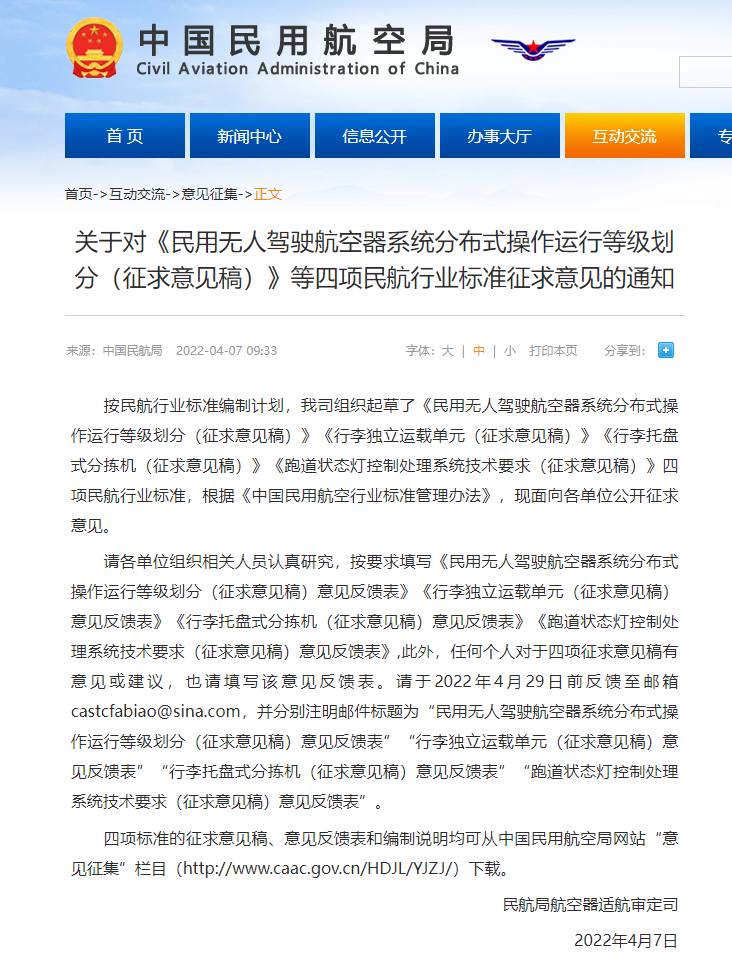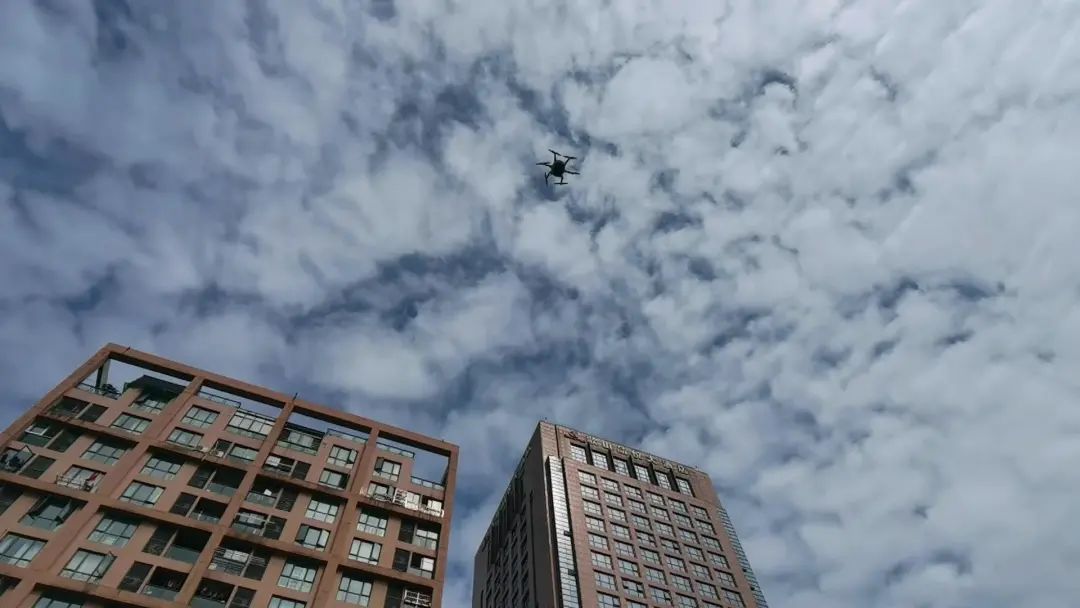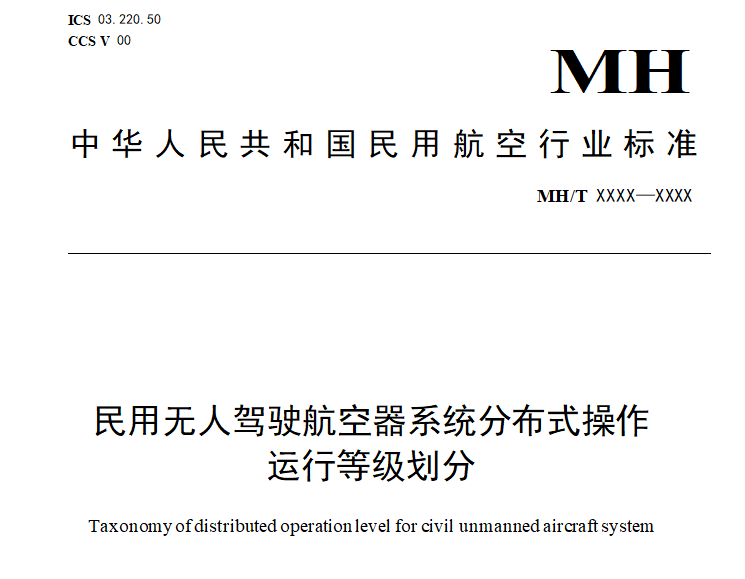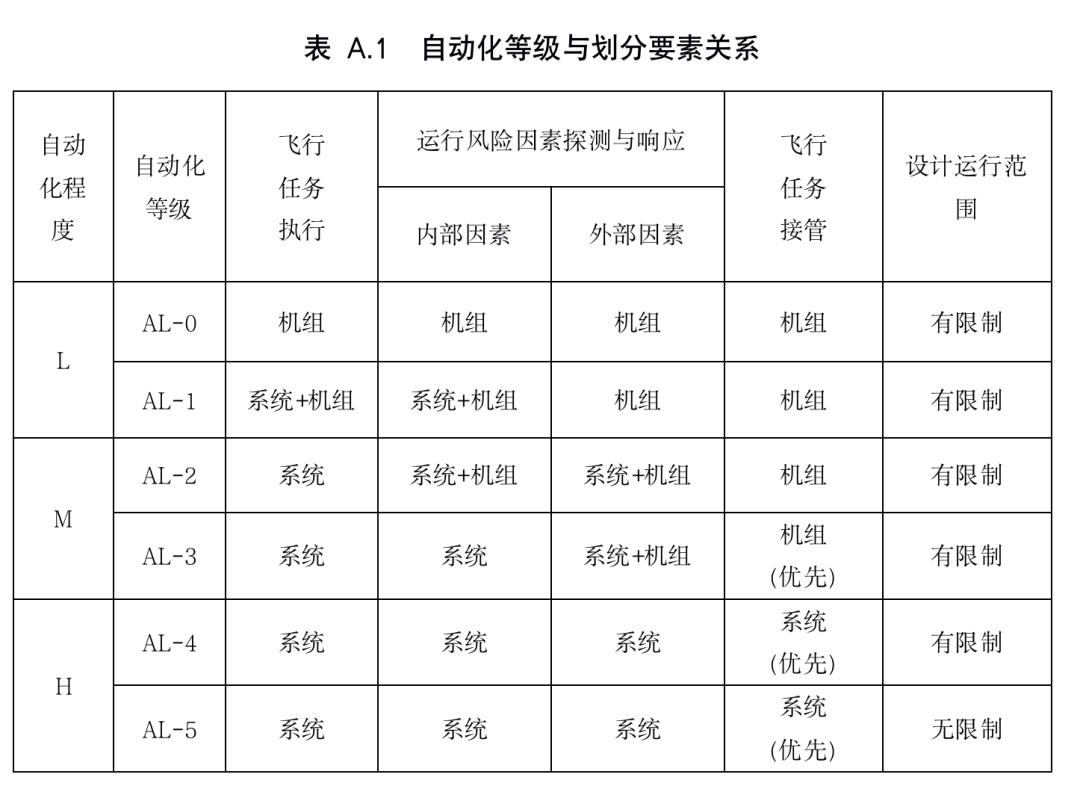On April 7, the Airworthiness Department of the Civil Aviation Administration of China issued the "Notice on Solicitation of Comments on Four Civil Aviation Industry Standards including the "Civil Unmanned Aircraft System Distributed Operation and Operation Level Classification (Draft for Comment)", officially soliciting comments. "Civil Unmanned Aircraft System Distributed Operation Level Classification" was proposed by the Flight Standards Department, led by Antwork Technology, and led by the Civil Aviation Management Institute, the Academy of Aviation Science, Fengniao, EHang, Longxing UAV, China AOPA, etc. Jointly drafted by domestic units.

The draft instructions for soliciting opinions pointed out that distributed operation operators represented by Antowork Sendba need to carry out large-scale UAV operation in increasingly complex and diverse operation scenarios. The mode of operating single or multiple unmanned aerial systems in a manner no longer meets the needs of the operating environment for safety, control accuracy and efficiency. With the high-speed iteration of UAS automation capabilities, distributed operations have gradually become an obvious trend in the development of UAS.

As for the evaluation method of distributed operation capability, it is still blank in the industry. In this regard, this standard proposes to use the degree of automation of civil unmanned aircraft systems as a distinction, divide the automation level into six levels from AL-0 to AL-5, and divide the technical elements of each level. At the same time, according to the standard of the automation level of the distributed operating system of civil unmanned aerial vehicle and the safety guarantee of distributed operation, the corresponding values are taken, and the five operating levels of OL-1 to OL-5 are comprehensively determined. Ultimately, the higher the operational level assessed, the higher the complexity and risk of scenarios that operators can operate safely.

It is worth noting that the standard for this consultation is the first in the industry to propose the concept of level division of UAV autopilot (automatic flight), which defines a six-level technical capability gradient from no automation to full automation. It provides a key research paradigm and understanding framework for the industry, and also establishes an important industry consensus for the further development of subsequent UAV automation technology.

At the same time, at a time when distributed operation is becoming mainstream, the proposal and improvement of a series of distributed operation standards will also provide important guidance and basis for the training of distributed operation and operation talents in the UAV industry in the future.
Last month, the "Technical Requirements for Electric Multi-rotor Unmanned Aircraft (Light and Small) System for Urban Scenario Logistics", also led by Xunyi, was officially released and used by the Civil Aviation Administration.
Since it was awarded the world's first urban logistics drone trial operation license in 2019, Xun Ant has been actively playing an exemplary role as a leading enterprise in the industry. Based on its own R&D and operational experience, it has assisted the Civil Aviation Administration to continue to promote the construction of industry standards and regulate the industry. Management, has exported the experience of Xunyi to the industry in many aspects such as aircraft, operation specifications, air route and airport planning, and established a clear and clear management framework and technical specifications for the subsequent large-scale development of drone urban logistics and UAM industry.
咨询/售后服务热线:
400-765-5670
公众号-1

视频号-2
